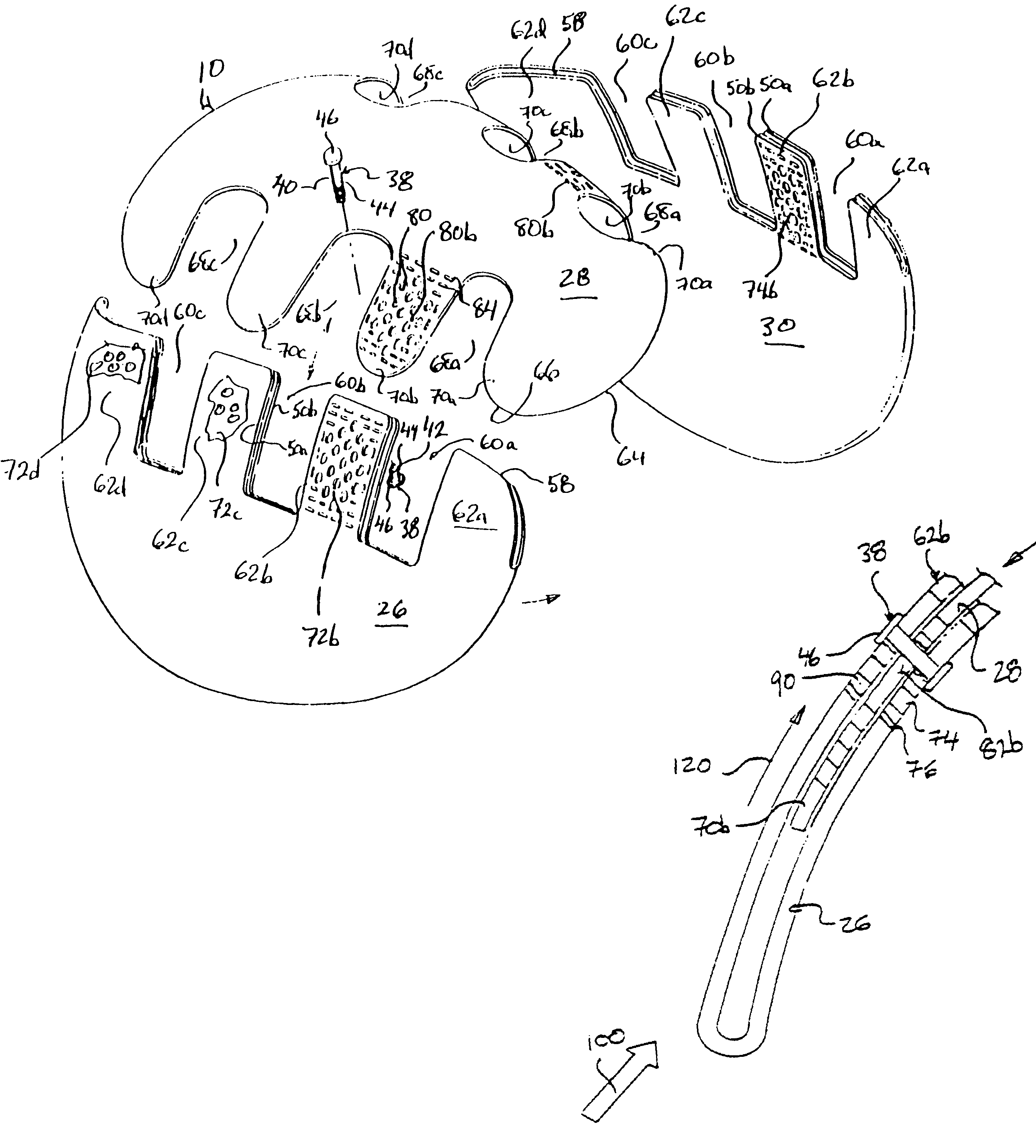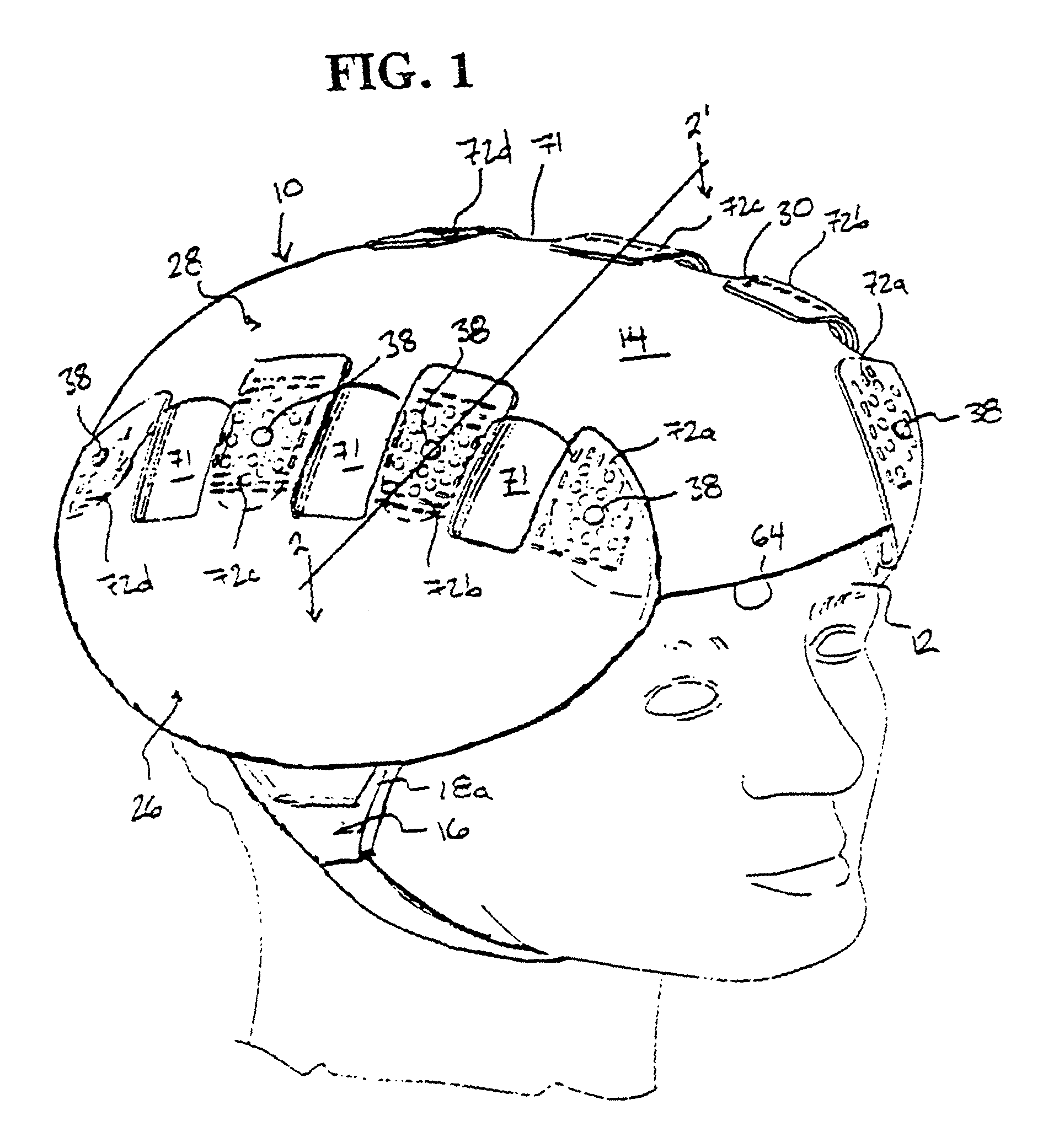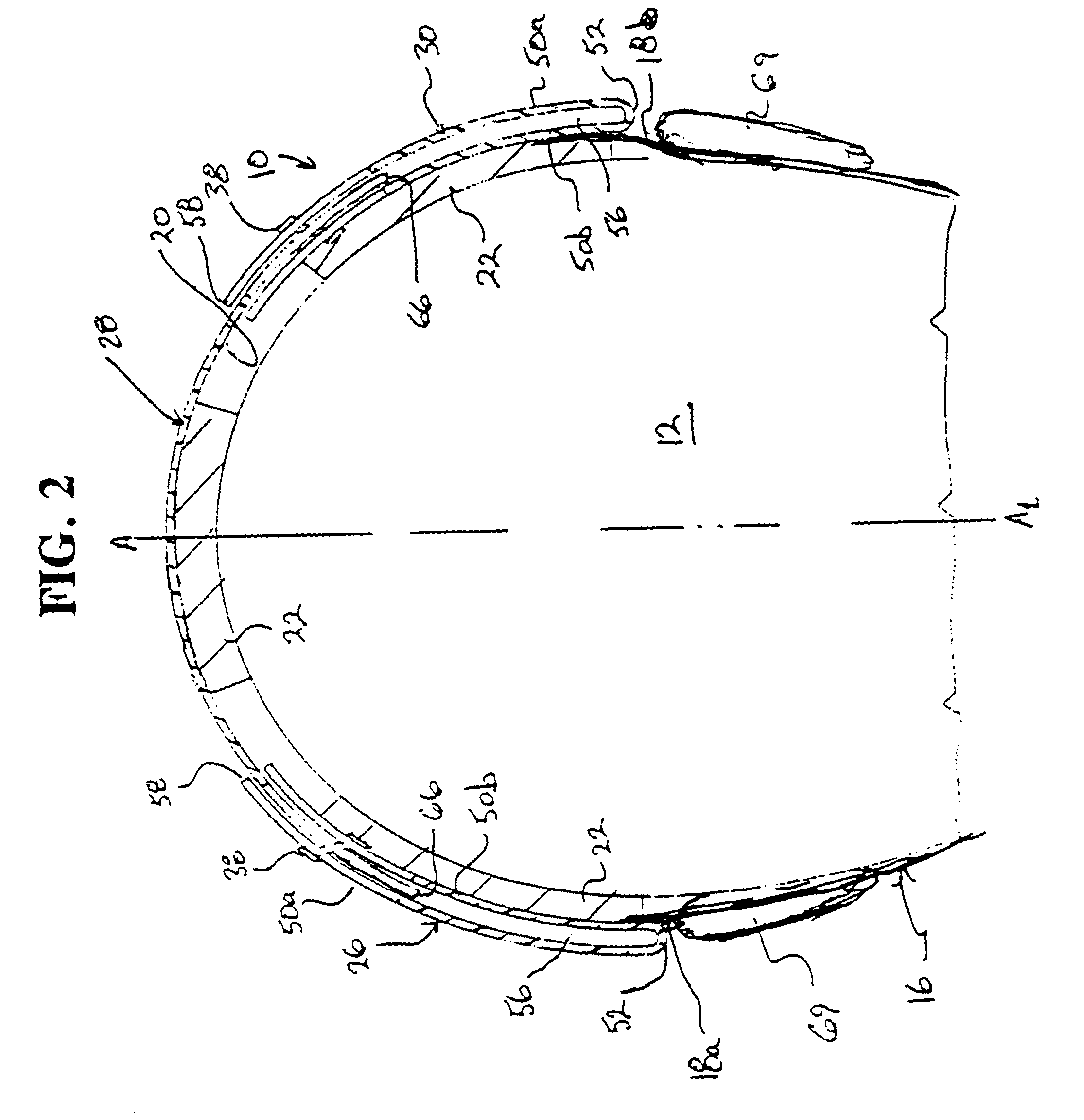Protective head covering having impact absorbing crumple or shear zone
- Summary
- Abstract
- Description
- Claims
- Application Information
AI Technical Summary
Benefits of technology
Problems solved by technology
Method used
Image
Examples
Embodiment Construction
[0057]Reference may first be had to FIG. 1 which illustrates a bicycle helmet construction 10 for use in protecting a user's head 12 from impact forces, which for example would occur if the wearer was struck by a car or otherwise was thrown from a bicycle (not shown). The helmet construction 10 includes a generally domed shaped shell 14 which is secured in place on top of the user's head 12 by a releasable chin strap 16. The chin strap 16 is of a conventional two-piece design and is secured at each of its ends 18a,18b (FIG. 2) to a respective longitudinal side portion of the shell 14. As shown best in FIG. 2, the shell 14 has a size and contour selected so as to substantially cover the top of the user's head 12 and extends symmetrically in the front to back direction about a vertical central axis A–A1 (FIG. 2). The inner surface 20 of the shell 14 which is immediately adjacent to the user's head 12 is lined with strips of resiliently compressible foam cushioning 22. The cushioning 2...
PUM
 Login to View More
Login to View More Abstract
Description
Claims
Application Information
 Login to View More
Login to View More - R&D
- Intellectual Property
- Life Sciences
- Materials
- Tech Scout
- Unparalleled Data Quality
- Higher Quality Content
- 60% Fewer Hallucinations
Browse by: Latest US Patents, China's latest patents, Technical Efficacy Thesaurus, Application Domain, Technology Topic, Popular Technical Reports.
© 2025 PatSnap. All rights reserved.Legal|Privacy policy|Modern Slavery Act Transparency Statement|Sitemap|About US| Contact US: help@patsnap.com



